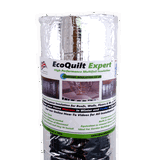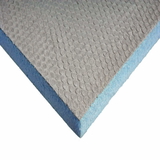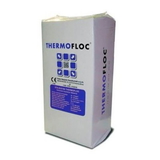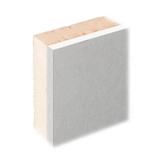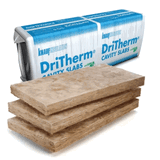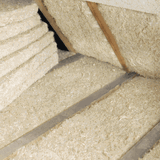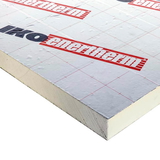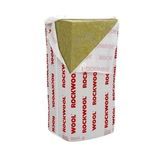- Blogs
- Understanding Home Energy Assessments: Advantages and Things to Think About
Understanding Home Energy Assessments: Advantages and Things to Think About

A thorough examination of a home's energy consumption and effectiveness is conducted through a home energy assessment. This process entails scrutinising the various systems and appliances that consume energy in the home, assessing the insulation and air sealing, and scrutinising energy bills and consumption patterns.
The primary objective of a home energy assessment is to pinpoint areas within the home where energy is being squandered and to suggest economical methods to enhance energy efficiency. The significance of energy efficiency cannot be overstated, serving multiple purposes. It aids homeowners in cutting down on their energy expenses, enhances the comfort and indoor air quality of their residences, and diminishes their carbon footprint.
This write-up will delve into the components encompassed in a home energy assessment, the diverse assessment types accessible, and the advantages associated with obtaining an assessment for your residence. Additionally, guidance on securing a home energy assessment will be provided, whether through the engagement of a professional assessor or by carrying out a do-it-yourself assessment.
What's Covered in a Home Energy Assessment
In a standard home energy assessment, a thorough examination is carried out on the home's energy-consuming systems and devices, encompassing the likes of the heating and cooling system, water heater, and major appliances. The assessor takes a close look at the efficiency and age of these systems and appliances, in addition to reviewing their maintenance history and patterns of usage.
Simultaneously, the assessor scrutinizes the home's insulation and air sealing, investigating for any gaps, cracks, or points where energy might escape. This involves inspecting the attic, walls, floors, windows, doors, and any other areas where insulation might be inadequate or absent.
Apart from the physical examination, the assessor delves into the homeowner's energy bills and usage patterns to gain a comprehensive understanding of the home's energy consumption. Armed with this data, the assessor can provide tailored recommendations for energy-saving enhancements most suitable for the home. These suggestions might involve transitioning to more efficient appliances, enhancing insulation and air sealing, or incorporating energy-efficient features like low-flow showerheads or programmable thermostats.
Home Energy Assessment Types
Home energy assessments come in two main flavours: those carried out by certified energy assessors and the do-it-yourself (DIY) assessments using online tools or guides.
The professional assessments involve certified energy assessors who possess the necessary training and expertise to evaluate a home's energy consumption and efficiency meticulously. These assessors are typically employed by energy companies, government agencies, or private firms specializing in energy assessments. Although professional assessments tend to be more thorough and precise compared to DIY assessments, they might also incur higher costs.
For those homeowners who prefer a hands-on approach, DIY assessments are an available option. Online tools and guidelines exist to aid homeowners in conducting their own assessments. These resources may include checklists, calculators, and other utilities to assist homeowners in pinpointing areas where energy is being squandered and proposing energy-efficient upgrades.
While DIY assessments provide a good starting point, they may not match the depth or precision of professional assessments, potentially causing homeowners to overlook crucial energy-saving opportunities.
DIY Assessments for Your Home's Energy Efficiency
 While opting for a professional home energy assessment is the gold standard for identifying energy losses and potential savings, you can take matters into your own hands with a simple but diligent walk-through of your home.
While opting for a professional home energy assessment is the gold standard for identifying energy losses and potential savings, you can take matters into your own hands with a simple but diligent walk-through of your home.
This DIY home energy assessment won't match the thoroughness of a professional one, but it's a good starting point to identify and tackle some of the more straightforward energy inefficiencies. As you move through your home, keep a checklist of areas you've inspected and note any problems you find – this list will come in handy when prioritizing your energy efficiency upgrades.
Don't assume that just because your home is new, it's automatically optimised for energy savings. Rapid advancements in energy-saving technology have outpaced the standard training provided to many builders, even those with solid reputations.
Review your utility bills
Acquiring a power and energy monitor that can instantly read and log data isn't overly expensive. This will enable you to identify which home devices are the costliest to operate, prompting adjustments in your usage patterns.
Evaluate your heating and hot water systems (and cooling if applicable)
An unexpected surge in heating bills could indicate the need for an upgrade or servicing of your oil or gas boiler. Regularly bleeding and cleaning your radiators can also enhance the efficiency of your heating system.
For homes relying on air-con systems for temperature control, regular filter maintenance improves energy efficiency.
Address insulation concerns
Your property's age can provide insights into the likelihood of proper insulation during construction. Building standards evolve, so examining your loft and walls is advisable. To inspect wall insulation, discreetly create a hole and probe to assess its condition. Note that even recently built houses may lack the minimum loft insulation of 270mm.
Update appliances
Older electrical appliances often exhibit inefficiency in energy consumption. Gradually replacing devices like electric heaters, refrigerators, dishwashers, and air conditioning units can yield long-term savings.
Check for drafts
Windows and doors are common sources of air leaks, even after modernization. Periodically check and replace worn-out window seals and door draught excluders. To identify other drafty areas, use a lit tealight candle near joints, corners, trim work, floors, and around duct outlets, cables, and pipes. An unstable flame indicates gaps, which you can insulate with caulk, sealant, and tape. If needed, seek assistance from a professional handyman.
Change light bulbs
Switching to energy-saving bulbs reduces bills and benefits the environment. If unsure about transitioning the entire house to LED lighting, strategically replace bulbs based on room usage. Consider hiring a reliable electrician for assistance.
Adjusting Small Habits for Energy Savings
Your proactive approach to improving home energy efficiency doesn't end here. Evaluate your daily appliance use and make changes for lasting impact—every small adjustment counts!
Appliances
- Kettle – Boil only the water you need for your cuppa, not for a tea party!
- Dishwasher – Opt for full loads and use the eco-button. Occasionally hand wash a few dishes to save energy.
- Washing machine – If on an off-peak tariff, run it during bedtime. Remember, half-loads use as much electricity as full loads and temperature settings matter.
- Microwave – Use it purposefully; avoid unnecessary reheating sessions. Encourage family meals over individual reheats.
- Dryer – Dry clothes indoors on radiators or drying racks when possible.
Lighting
- Indoors – Turn off unused lights; it's a simple practice many overlook.
- Outdoors – Invest in garden sensor lights and solar lights.
Electronic devices
- Turn off the TV when not needed; not all devices need to run in standby mode.
- Unplug idle devices like computers, TVs, toasters, and coffee makers to cut standby electricity consumption.
Heating
- Temperature control – Adjust thermostat settings as needed and close radiator valves in unused rooms.
- Insulation – Swap lace draperies for thick curtains in colder months.
- Sunlight – Utilize sunlight to boost room temperature on bright, cold days by opening curtains.
There you have it, a straightforward guide on conducting a DIY home energy check and implementing energy-saving habits to make a positive impact at home and on the environment.
Professional Energy Assessment
 Once you've completed your DIY assessment, consider bringing in a professional for a more in-depth analysis. Many utilities provide professional energy assessments at no or reduced cost to customers. Your self-assessment will aid the auditor in thoroughly analyzing your home, covering aspects like comfort, indoor air quality, and potential energy and cost savings.
Once you've completed your DIY assessment, consider bringing in a professional for a more in-depth analysis. Many utilities provide professional energy assessments at no or reduced cost to customers. Your self-assessment will aid the auditor in thoroughly analyzing your home, covering aspects like comfort, indoor air quality, and potential energy and cost savings.
Now the question arrives here is “How to Arrange a Home Energy Assessment”?
If the idea of a home energy assessment has caught your attention, there are various avenues you can explore.
One approach involves having your property evaluated as part of the Green Deal Assessment. This program in the UK is designed to aid homeowners in implementing energy-efficient enhancements to their homes. To qualify for the Green Deal, your property must undergo an assessment conducted by a certified Green Deal assessor.
The assessor will pay a visit to your home, collect information about the property and your energy consumption patterns, and then suggest improvements to save energy. Subsequently, you'll be furnished with a Green Deal advice report, which encompasses an Energy Performance Certificate (EPC) rating indicating your home's energy efficiency, suggestions for enhancements, and an estimate of potential savings on energy bills. This report remains valid for 10 years or until there are alterations to the property that might impact energy usage. The actual reduction in energy bills will hinge on the quantity of energy consumed and the future cost of energy.
Embarking on the Green Deal involves homeowners reaching out to a Green Deal assessor directly or enlisting the assistance of a Green Deal provider in locating an assessor. There might be a fee associated with the assessment, and the assessor is obligated to inform you of this charge beforehand. Throughout the assessment, you may be queried about property ownership or rental status, the age and construction of your home, potential access issues, as well as your energy usage and any existing energy-saving measures.
Post-assessment, you'll receive a Green Deal advice report, offering insights into your property's energy efficiency and recommendations for improvements. The report will also provide an estimate of potential energy bill savings and a verdict on whether the enhancements will eventually pay for themselves through reduced energy costs. As mentioned earlier, the actual savings will be contingent on future energy costs and the amount of energy consumed.
Understanding Energy Performance Certificates and Their Importance
Energy Performance Certificates (EPCs) provide information on a building's energy efficiency, assigning a rating from A to G. Similar to appliance stickers, they indicate how costly it is to heat and light the property, along with estimated carbon dioxide emissions. EPCs are valid for 10 years and include suggestions for improvements to enhance energy efficiency.
EPCs are crucial for property sales or rentals, as they must be available to potential buyers or tenants from the start of the marketing process. An approved domestic energy assessor is required to produce the EPC. For buyers or renters, EPCs facilitate easy comparison of energy efficiency among different properties, also offering insights into potential improvements, costs, and savings.
The certificate highlights energy efficiency improvements, their costs, and potential savings, aiding homeowners in enhancing their property or guiding buyers looking to make improvements. However, the figures provided are for a typical household in that property and are not personalized to individual lifestyles. Implementing recommended improvements may prompt obtaining a new EPC to reflect these changes.
Not all EPCs look the same, and the guide uses a 2017 certificate as an example. Older certificates may differ in appearance, and there is a new format for EPCs in England, Wales, and Northern Ireland. Despite visual variations, the sections and information covered remain identical across regions.
The Benefits of Checking Your Homes Energy Assessment
Looking into your home's energy isn't just about using less energy and saving money. It's also about making your life better. Let me tell you how:
More Comfort
Checking your home's energy can really make it much more comfortable. By finding and fixing problems like not enough insulation and gaps where air gets in, you can keep your home at a nice temperature. That means you don't have to keep changing the thermostat all the time and you won't have any bits that are too hot or too cold. So, no matter what the weather's like outside, your home will be nice and cosy all year round.
Better Air
If the air in your home isn't good, it can make you sick. Checking your home's energy can find problems like not enough fresh air or things in the air that can make you ill. Fixing these problems can make the air in your home better, which is good for your health and your family's health.
Healthier Home
Checking your home's energy in the UK can also make your home healthier. By making your home use energy better, you can stop things like damp and mould. These are often caused by not having enough insulation and air getting in. So, your home will be a healthier and more comfy place for you and your family.
Less Noise
If your home is well looked after and doesn't let air in, it can also mean less noise. This is really good if you live in a busy place or near a noisy road. By stopping noise, checking your home's energy can make it a quieter and nicer place to live.
More Money for Your Home
Lastly, checking your home's energy can make your home worth more money. Lots of people want homes that use energy well, and if your home has been checked and made better for energy, it can be more attractive to buyers. This means you might get more money if you decide to sell your home in the future.
Conclusion
In summary, a home energy assessment is a crucial step for homeowners looking to enhance energy efficiency and cut costs. Whether opting for a professional assessment or a DIY evaluation, the process involves a thorough examination of energy-consuming systems and insulation. Beyond financial savings, benefits include improved comfort, indoor air quality, and a reduced carbon footprint.
DIY assessments provide a starting point, addressing areas like air leaks, insulation, and appliance efficiency. A comprehensive home efficiency plan should consider factors such as budget, time, and the homeowner's DIY capabilities. Transitioning from a DIY assessment to a professional one offers a more in-depth analysis.
In the UK, the Green Deal Assessment provides a structured approach, offering insights and recommendations. Energy Performance Certificates (EPCs) are crucial for property transactions, guiding improvements and showcasing energy efficiency. Investing in a home's energy performance not only saves money but also creates a more comfortable, healthier, and environmentally friendly living space.

Samuel Hitch
Managing Director
Buy Insulation Online.
Leave A Reply
Your feedback is greatly appreciated, please comment on our content below. Your email address will not be published. Required fields are marked *
